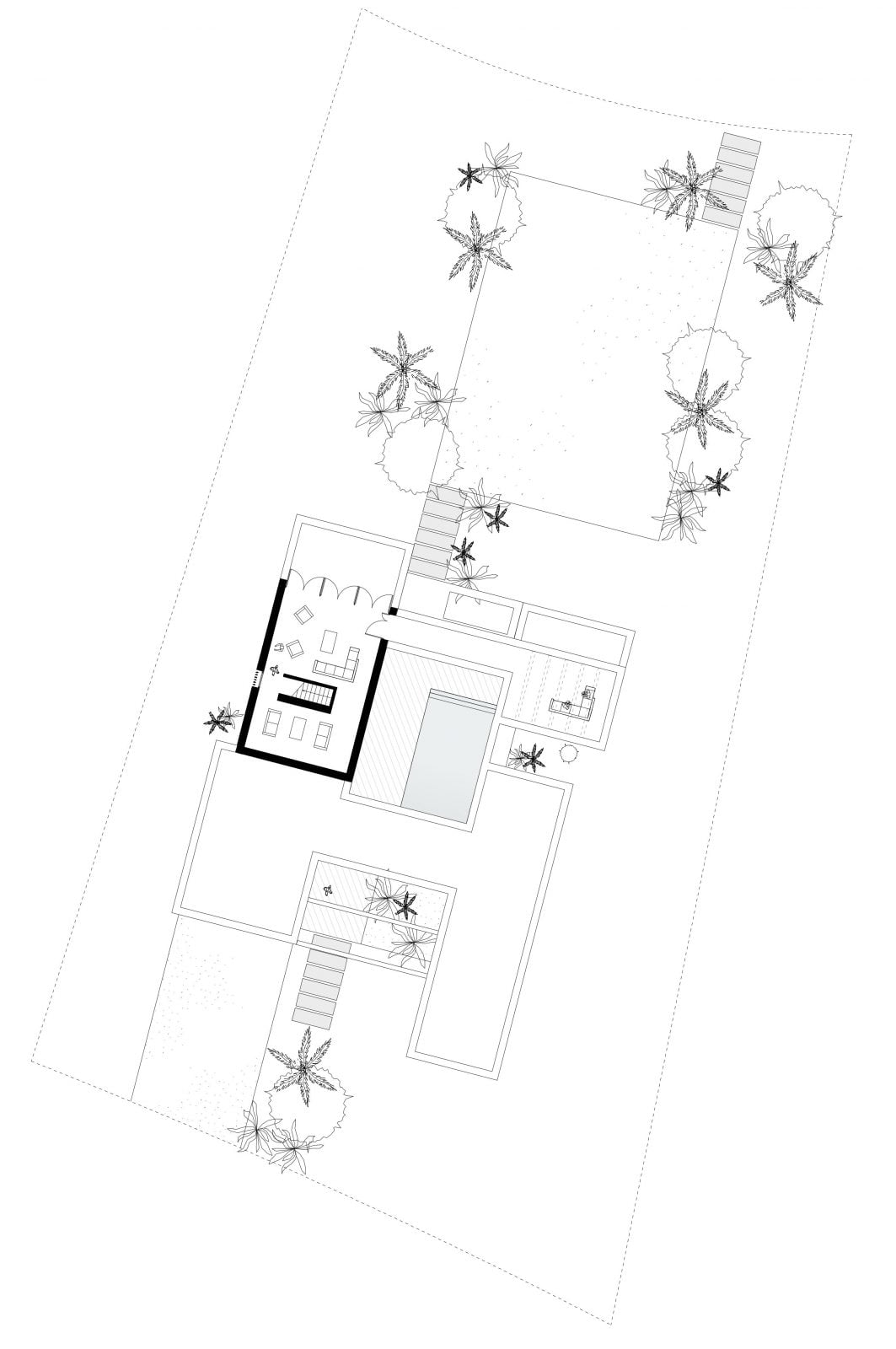Doha, Qatar: Desert Housing
This experimental housing project on the periphery of Doha, Qatar is one in a series of collaborative design projects that PAD studio is undertaking with Allan Murray Design. The architectural concept takes inspiration from the ‘Wadi’ and integrates traditional adobe construction techniques in a contemporary way. Master-planning new community housing marks an exciting transition in scale for PAD studio. We researched, brainstormed and sought to understand this unique and amazing place.
Project Info
- Location: Qatar, Doha
- Collaborators: Allan Murray Design
- Image Credit: Ineffable Tale
Environmental Data
-
Energy Efficiency
1 2 3 4 5 6
-
Insulation
1 2 3
-
Thermal Mass
1 2 3 4 5 6 7 8
-
Airtightness
1 2 3 4 5
-
Solar PV
1 2 3 4 5 6 7 8
-
Embodied Carbon
1
- Heating/Hot Water
-
Solar Thermal
Yes No
-
Rain Water Harvest
Yes No
- Ventilation
-
Energy Storage
Yes No
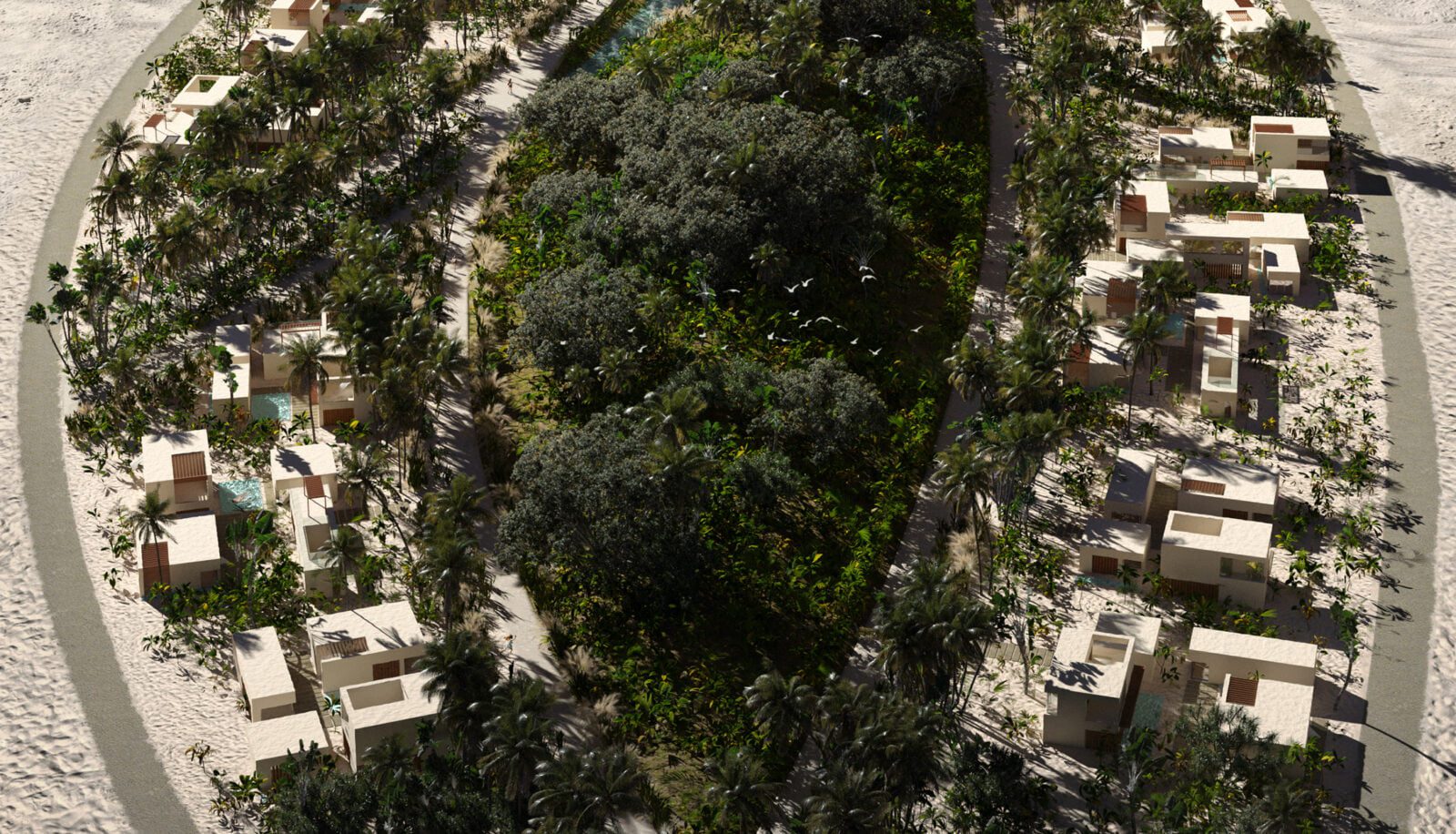
Doha is a relatively new and rapidly expanding oil-rich city. Host to the World Cup in 2022 Doha boasts a plethora of buildings by renowned international Architects and sits within the Persian Gulf with its origins in pearling and fishing.
Designing for the desert climate meant creating shady spots for the community to gather was of paramount importance. Our concept was driven by the memory of the nearby Wadi. This not only provided the opportunity to de-salinate water from the Gulf bay using solar energy; but would support a verdant landscaped spine. A carpet of rich greenery with pools of cooling water, reminiscent of desert oasis communities. The villas take cues from the local historic Adobe Houses, tightly grouped houses with internal courtyards. These are placed in clusters around the verdant green spine.
This master plan sought to provide the opportunity for a community to grow or to connect families within an ecologically rich and tempered desert climate.
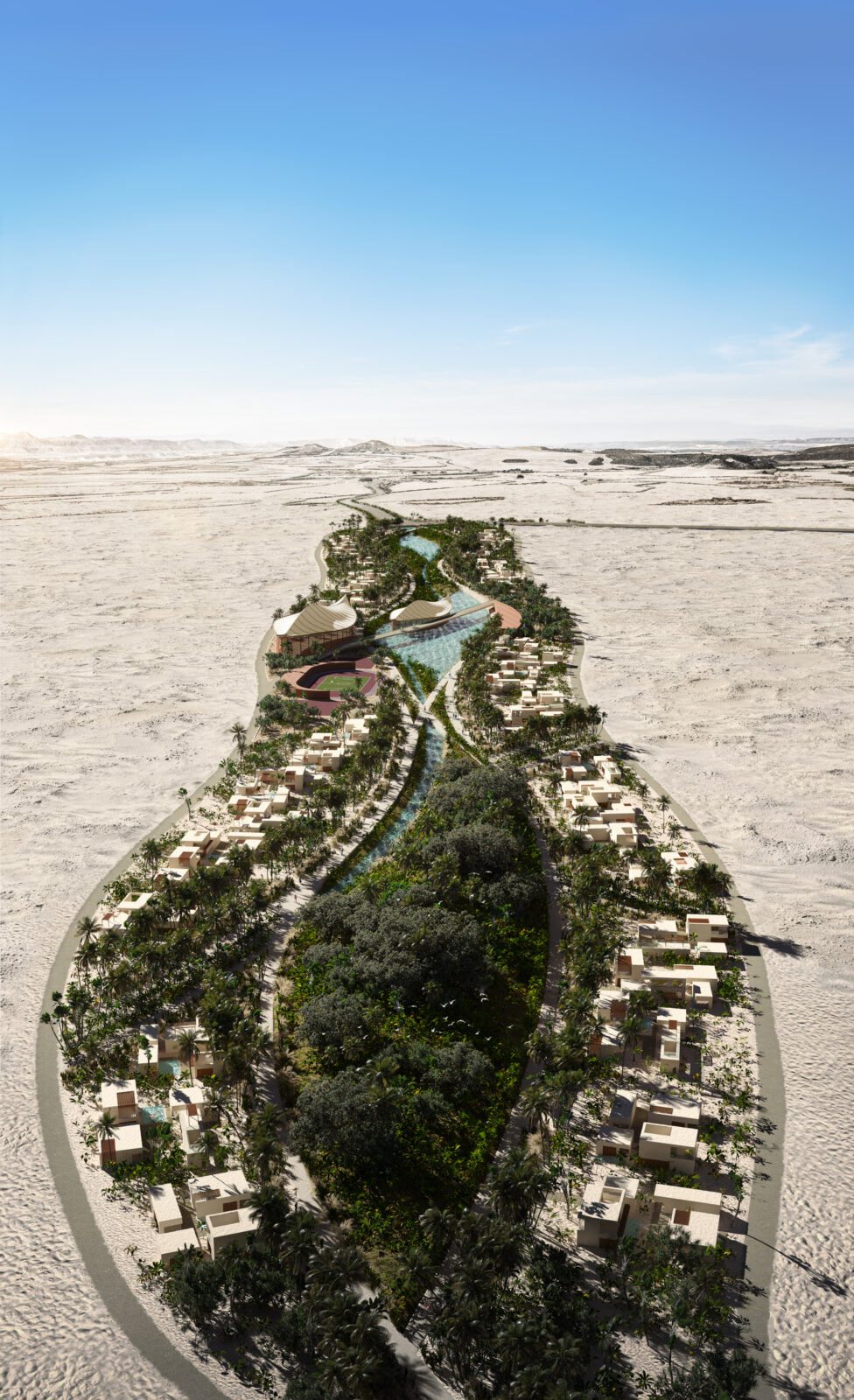
At PAD studio we are respectful of people and environments. Celebrating history and tradition, diversity and uniqueness. We are mindful of our responsibility to nature and our impact on the sites we work and the wider environment. Sustainability is complex and we believe it should be considered from the outset and throughout the building’s lifecycle. We do this automatically in the way we approach design and have a wealth of experience in building award-winning sustainable and beautiful buildings
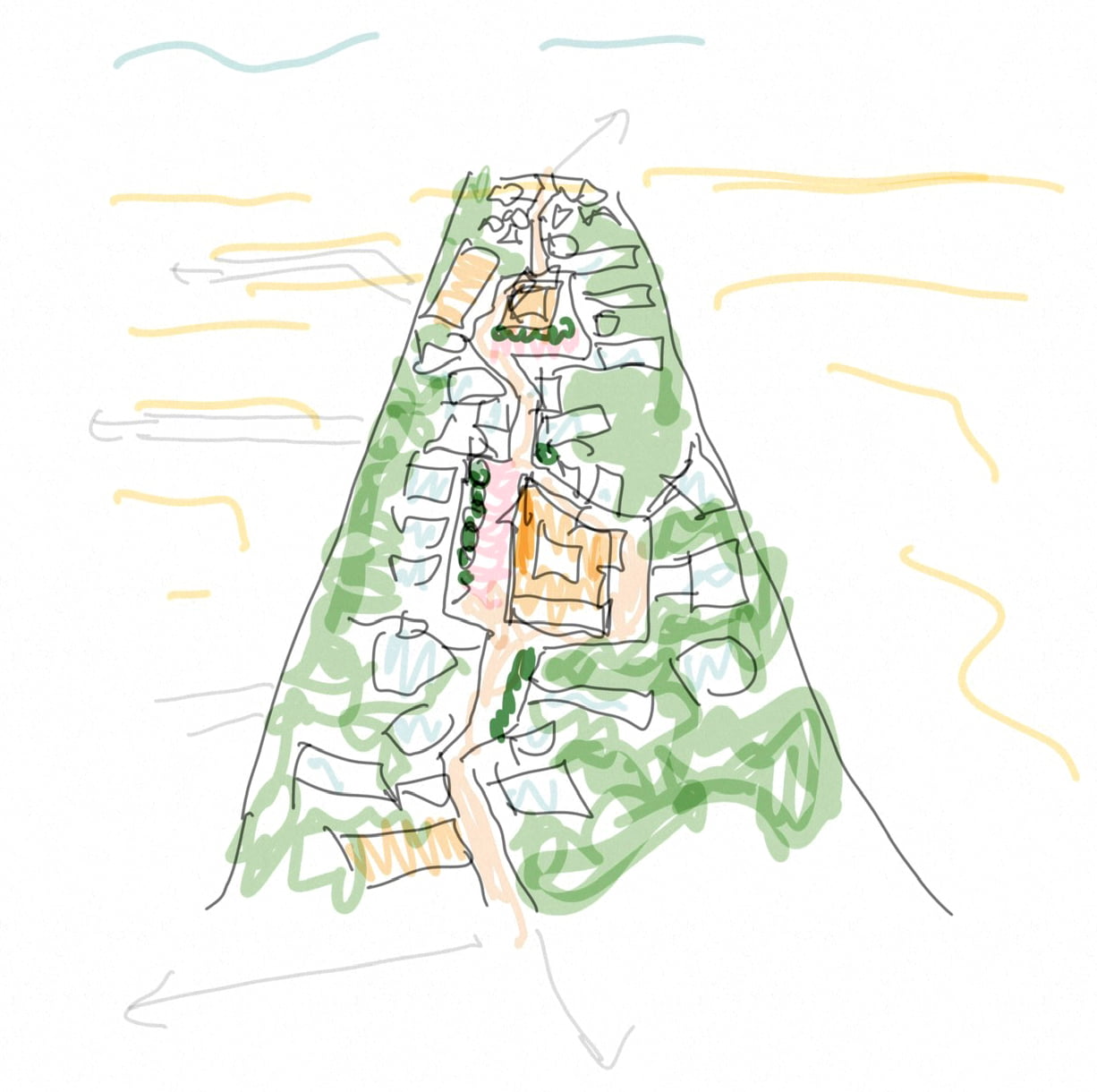
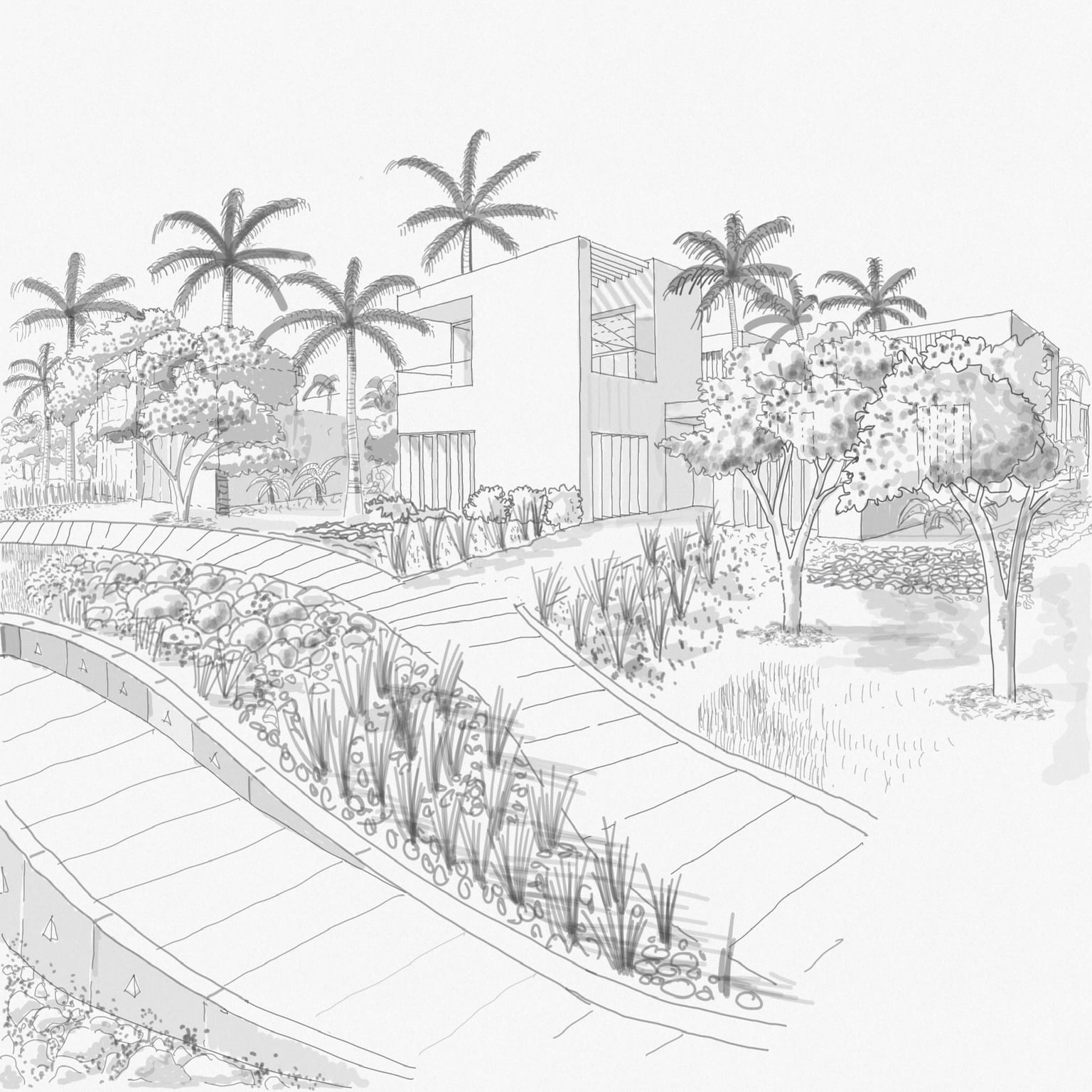
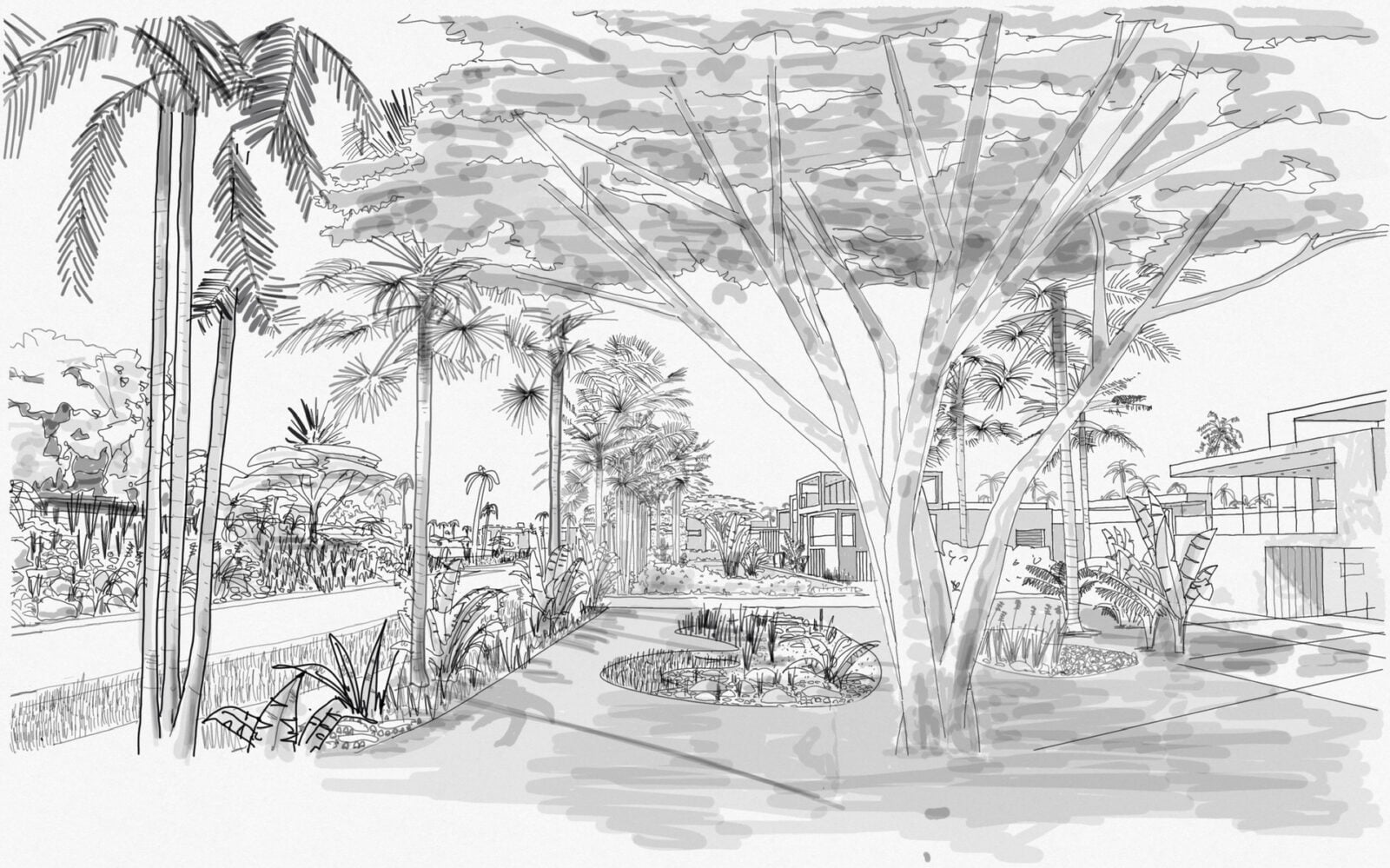
The green spine is the heart of this community and master plan. Occupying 42 hectares it is a car-free oasis. Undulating landforms run along its length, reminiscent of the gently rippling dunes. Heavily planted with native acacias and palms the spine has a series of interconnected pools and water features that punctuate the oasis planting. Fruit trees and lower herbaceous plants around the villas help to create a biodiverse community within a micro-climate oasis where people and nature can thrive in harsh desert conditions.
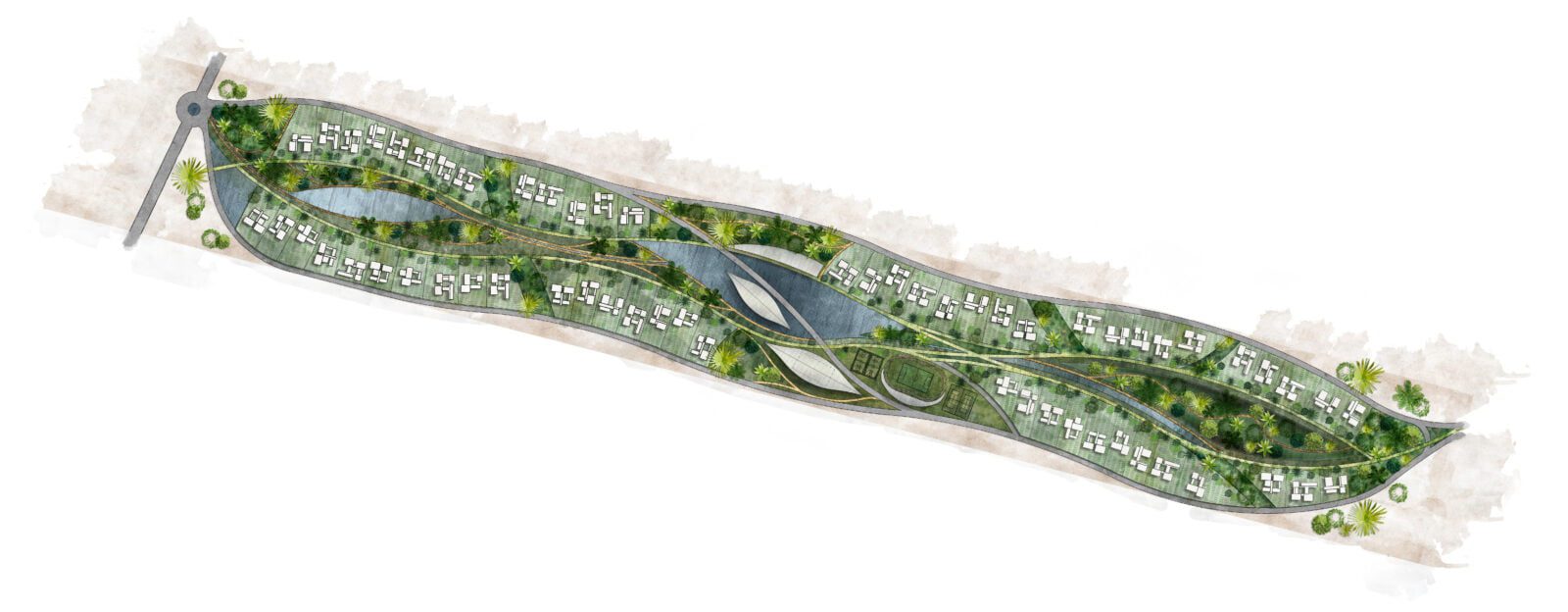
Car movement is primarily restricted to the road around the development to encourage a safe, healthy, and tranquil environment. Leaf-shaped pavilions in the centre of the master plan support community facilities. These include a Futsal pitch (five-a-side football) tennis courts, a community gym, a meeting hall and a swimming complex.
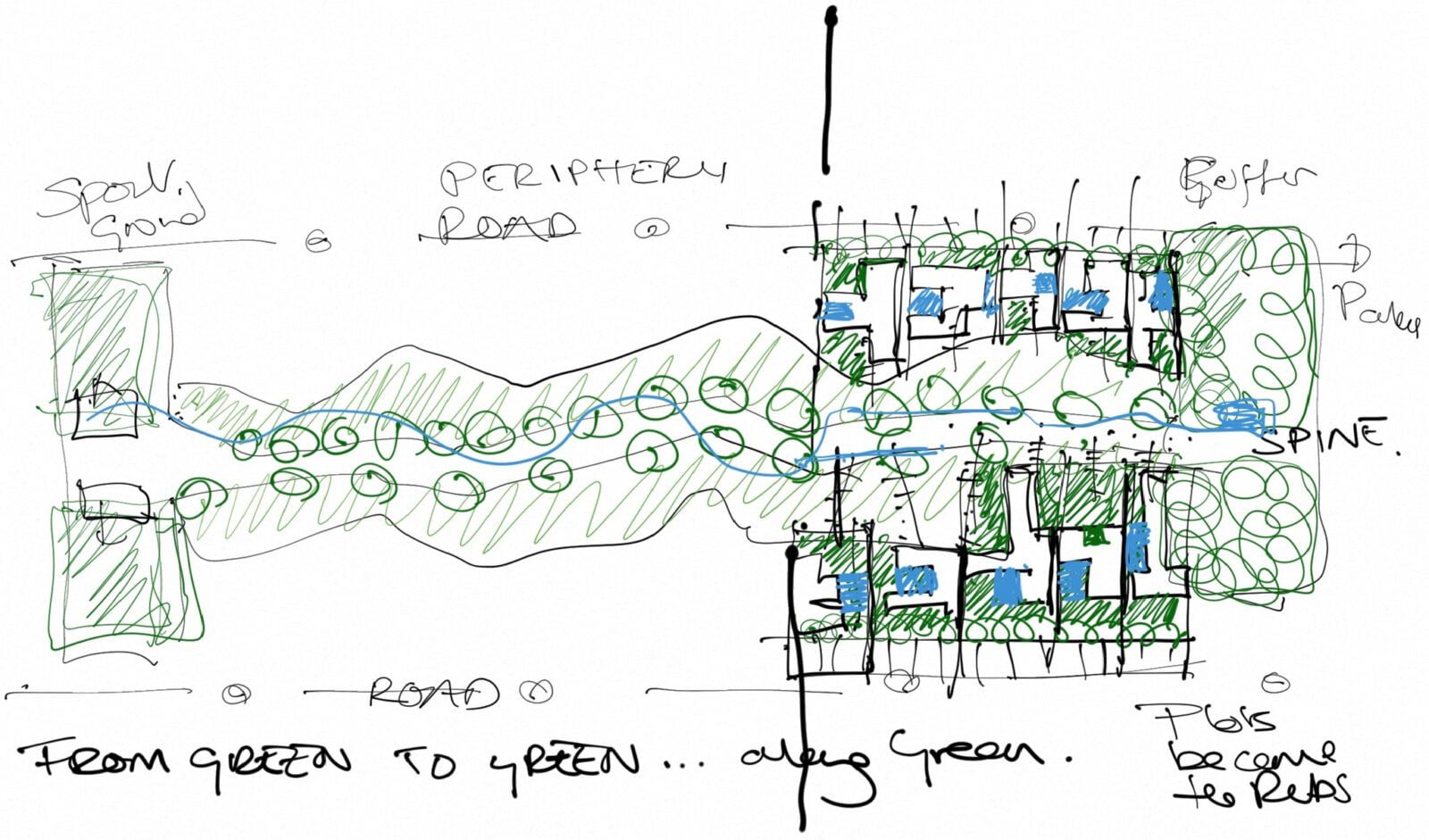
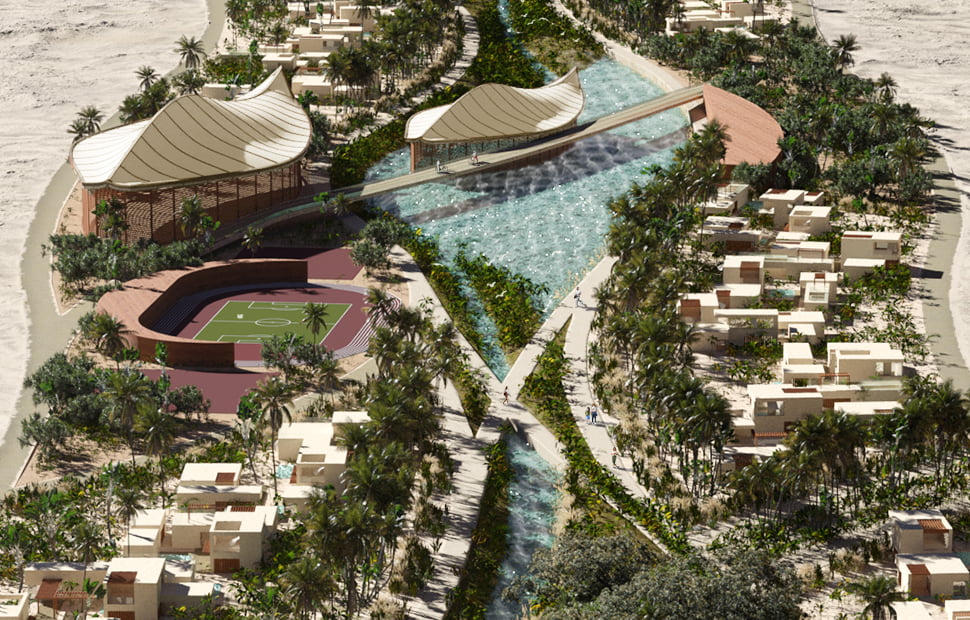
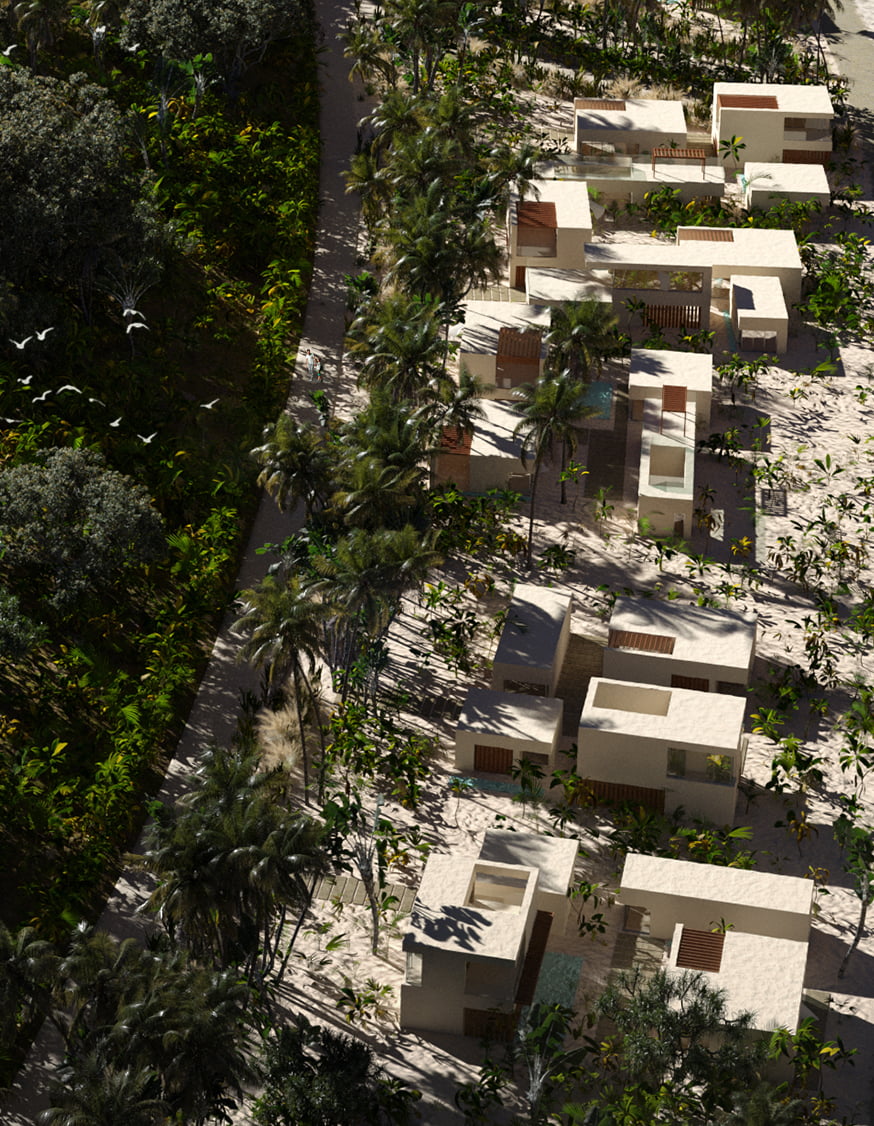
Every home in the master plan contains a cloistered courtyard formed around a natural pool. This pool is filtered by natural plants and assists with cross-ventilation and cooling. Thermal mass, created by thick walls, even out fluctuations in temperature. A reverse cooling system distributes cold water around the walls and floors creating ‘coolth’ and reducing air-conditioning needs.
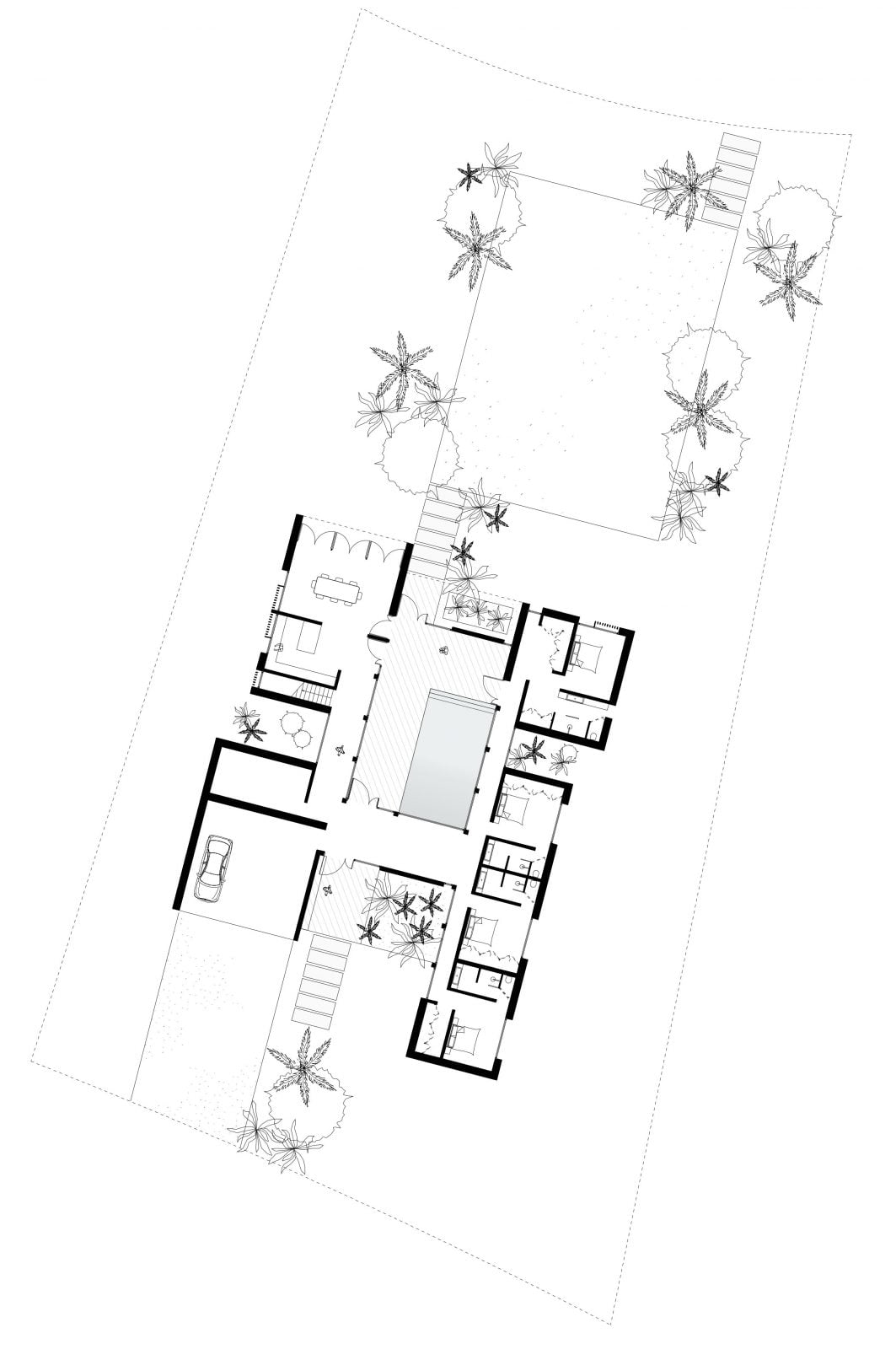
Solar gain is carefully controlled through screening to further reduce the need for powered cooling. Solar power generation is key in this sunny climate with a large community solar panel array and centralised battery storage distributing electricity throughout the master plan.
